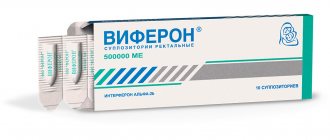ICD - pharyngitis:
- J02 - acute pharyngitis
- J02.0 - streptococcal pharyngitis
- J02.8 - acute pharyngitis caused by other specified pathogens
- J02.9 - acute pharyngitis, unspecified
- J31.2 - chronic pharyngitis
- J31.1 - chronic nasopharyngitis
Pharyngitis is rarely isolated as a separate disease; the diagnosis is usually acute respiratory viral disease (ARVI).
ARVI is a general name; the doctor usually specifies how exactly ARVI manifests itself.
This may be rhinitis (runny nose), pharyngitis (red throat), nasopharyngitis (inflammation of the nose and throat), etc.1,2
It is important not to confuse pharyngitis with tonsillitis.
To do this, let's understand the structure of the pharynx and oral cavity.
How to quickly relieve a sore throat
At the first unpleasant sensation in the throat, frequent warm drinks help. Drinks suitable for this:
- milk with honey;
- Tea with lemon;
- chamomile tea.
Curd compress effectively reduces pain . This ingredient perfectly relieves swelling, relieves pain and is hypoallergenic. Spread half a kilogram of cottage cheese evenly on thick paper and cover with a cloth made of natural material. The compress should be warm enough. To do this, use a battery, hair dryer or other heating device.
It is also important to gargle regularly. There are different recipes, but the most popular solution is prepared from improvised means that everyone has in the house. To prepare it, use baking soda (½ tsp), kitchen salt (½ tsp) and iodine (1 - 2 drops) per glass of water.
Medicinal infusions, teas, and inhalation solutions can easily replace expensive medications. With adequate treatment of pharyngitis, a positive effect occurs within two weeks.
Structure of the pharynx
The pharynx is divided into 3 sections:
- upper (nasopharynx)
- middle (oropharynx)
- lower (larynx)
This division is very conditional, because There are no clear boundaries between departments. When inflammation occurs, it rarely happens that the inflammatory process is localized in one section; usually infectious processes spread and move throughout all sections of the pharynx5,7
As can be seen in the picture below, the oropharynx is composed of the velopharyngeal arches, the uvula and the soft palate.
Pharyngitis usually affects:
- temples
- tongue
- soft sky
- posterior wall of the pharynx
The doctor uses a spatula to completely examine the pharynx. It is needed to improve visibility of the back of the throat.
The palatine tonsils also become inflamed with pharyngitis, because it is impossible to limit the inflammation process. This widespread nature of inflammation in pharyngitis distinguishes it from tonsillitis, where the tonsils are predominantly affected.
How common is pharyngitis?
Pharyngitis, like a common ARVI (viral infection), occurs quite often. The incidence rate increases during the season from September to May, with a peak in February and March. A decrease in the incidence of pharyngitis by 3-5 times is observed in the summer months.10,11
Acute pharyngitis occurs more often in childhood than in adults. Children under 5 years of age suffer viral infections, including pharyngitis, 6-8 times a year.8,9
In the first year of visiting a preschool institution, the incidence of the disease is 10-15% higher than in children at home. But, unfortunately, “home” children subsequently get sick more often at school age.
Inhalations
This is one of the simple and affordable methods of treating pharyngitis. Traditional inhalation methods offer many recipes. It is important to remember that steam inhalation can only be performed in the absence of elevated temperature.
- In a standard glass of warm water, mix one half tablespoon of baking soda, salt and a couple of drops of iodine. A sea salt solution also works great. The proportions are the same.
- Use an infusion from a collection of herbs: sage, coltsfoot, eucalyptus, mint, viburnum, linden. It is necessary to add six teaspoons of crushed pharmaceutical herbs to one liter of water. Leave in a steam bath for ten minutes.
- An infusion of pine buds is a storehouse of vitamin C and is suitable for inhalation. Prepare the solution: 2 tbsp. l. raw materials for one glass of boiling water.
- Essential oils of menthol, peach, oak bark, and juniper are widely used for antiviral and disinfecting results. Three drops per glass of hot water is enough.
- Both adults and children will benefit from aerosol inhalations of Lake Shira mineral salt from Shirline dry concentrate. Make a 1% warm solution (38-40 degrees). Every day for children for 5-7 minutes, for adults 10-15 minutes. You can do it 2 times a day. The course of treatment is 12 – 20 procedures.
Causes of pharyngitis and tonsillitis
Etiology (origin, cause) of pharyngitis. In 70-90% of cases, pharyngitis is caused by viruses. Pharyngitis can also be caused by bacteria, fungi, allergies, injuries, and exposure to irritating factors.
The most common viruses are rhinoviruses, adenoviruses, influenza, parainfluenza, enteroviruses, Coxsackie A, coronaviruses, a group of herpes viruses (Epstein-Barr virus, cytomegalovirus, HSV).12
There are pharyngitis, which are classified as a separate diagnosis depending on the pathogen, for example streptococcal pharyngitis ICD J02.0
Classification of pharyngitis
Pharyngitis can be acute or chronic. Acute is inflammation that just arose (suddenly), and chronic is a disease that persists for a long time, and it may not bother a person, but under certain circumstances again cause complaints and anxiety.3
| CLASSIFICATION | A COMMENT | ||
| classification: | Classification of pharyngitis due to its occurrence: | a comment: | viral bacterial fungal allergic traumatic caused by exposure to irritating factors caused by gastrointestinal diseases (gastroesophageal reflux, stomach diseases, etc.) |
| classification: | Pharyngitis associated with specific pathogens: | a comment: | Epstein Bar virus for infectious mononucleosis Yersinia enterocolitica for yersinial pharyngitis gonococcus for gonorrheal pharyngitis Leptotrix buccalis for leptotrichosis of the pharynx |
| classification: | Types of chronic pharyngitis: | a comment: | hypertrophic (enlargement of the mucous membrane) atrophic (depletion of the mucous membrane) catarrhal (standard inflammation) mixed |
Reasons for the development of the disease
In most cases, acute pharyngitis does not act as an independent pathology, but is only a manifestation of a general infectious process. Many infections (diphtheria, scarlet fever, measles, influenza) debut as an acute form of pharyngitis and are therefore not diagnosed in a timely manner.
In 70% of cases, acute inflammation of the pharynx is caused not by bacteria, but by viruses. Most often this is:
- influenza and parainfluenza viruses;
- rhinoviruses;
- adenoviruses;
- Epstein-Bar viruses;
- cytomegalovirus family;
- enteroviruses.
Only 30% of cases of acute pharyngitis are caused by bacterial flora:
- staphylococci;
- pneumococci;
- streptococci of groups A, C, G;
- Corynebacterium diphtheria;
- hemophilus influenzae;
- atypical pathogens are chlamydia and mycoplasma.
The latter are called atypical, because settle inside cells, and not on the surface of the mucosa, so the immune system cannot detect them. For this reason, such inflammatory processes take a long time, creating significant difficulties in carrying out etiotropic (acting on the cause) therapy.
In a small percentage of cases, pharyngitis is caused by fungal flora. As a rule, this is due to a general weakening of the immune system or local immunodeficiency (for example, in smokers). This is also facilitated by long-term use of antibacterial drugs.
If not treated correctly, acute pharyngitis can become chronic. Most often, pharyngitis caused by cytomegalovirus infection, Epstein-Barr virus, chlamydial and mycoplasma infection is chronic, since these microorganisms live inside cells and are not affected by local antibacterial and antiviral therapy. But inflammation caused by streptococci and staphylococci can also become chronic.
The development of chronic pharyngitis is a consequence of one of two processes:
- chronicity of acute inflammation of the pharynx due to poor immune defense;
- secondary infection of the pharynx from infectious foci located in the body (carious teeth, inflammation of the ENT organs, diseases of the digestive tract, etc.).
Factors that increase the likelihood of pharyngitis:
- hypothermia of the whole body or only the upper respiratory tract;
- alcohol abuse;
- eating sour, spicy, hot or cold foods;
- nasal breathing disorder.
Breathing through the nose becomes difficult in conditions such as:
- deviated nasal septum;
- nasal polyps;
- hypertrophy of the inferior turbinates;
- allergic rhinitis.
In these cases, a person has to breathe through his mouth, and this dries out the oral mucosa and reduces local immunity, because The production of immunoglobulin A decreases.
Atrophic pharyngitis is also provoked by other causative factors:
- lack of vitamins;
- anemia;
- functional heart failure;
- renal failure;
- diabetes;
- decreased thyroid function (hypothyroidism);
- menopausal syndrome.
Diagnosis of pharyngitis
Acute pharyngitis can be determined by patient complaints and examination of the oropharynx (pharyngoscopy).
Objective symptoms of pharyngitis, which are assessed by a doctor when examining the throat:
- swelling and hyperemia (redness) of the pharyngeal mucosa
- purulent or mucopurulent plaque on the walls of the pharyngeal mucosa
- the presence of inflammation in the arches, tonsils, orifices of the auditory tubes
- the presence of bright red tubercles on the back surface of the pharynx and on the side - hypertrophied (enlarged) lymphoid follicles
- thinning of the mucosa with areas of exfoliating epithelium, crusts and viscous mucus (atrophic pharyngitis)
Based on this, the doctor can make not only a diagnosis of pharyngitis, but also suggest its cause (viral inflammation, fungal infection, etc.).
Despite the fact that 70% of acute pharyngitis is a viral disease, sometimes it is necessary to exclude a bacterial cause. This is very important for further treatment tactics and prevention of complications. To do this, you should conduct a rapid test to exclude the streptococcal nature of pharyngitis.
In some cases, with fever, long-term complaints, or a temperature exceeding 3 days, it is also necessary to take a general blood test to understand the cause of acute pharyngitis.
Differences from the subatrophic form
Subatrophic pharyngitis, the symptoms of which are minor, is the initial stage of atrophic pathology. There is no thinning or irreversible change in tissue yet. Subatrophic pharyngitis is dangerous because pronounced symptoms do not always appear, which is why many patients do not seek timely medical help. As a result, the start of therapy occurs at a time when the mucous membranes are already seriously damaged and cannot recover, and as a result, treatment is only supportive.
Complications of pharyngitis
Acute pharyngitis usually responds well to treatment. The prognosis for viral pharyngitis is recovery.
Bacterial (streptococcal pharyngitis) can be complicated by the formation of a retropharyngeal abscess, and subsequently have a negative effect on the heart and kidneys, causing endocarditis and glomerulonephritis.
Symptoms of pharyngitis can persist even with proper treatment, if the true cause of pharyngitis is not eliminated. For example, if gastroesophageal reflux disease (damage to the gastrointestinal tract) is not treated, then pharyngitis will constantly remind itself.
Acute pharyngitis can become chronic.
Prevention of pharyngitis
To prevent pharyngitis, it is recommended:
- avoid hypothermia and dress appropriately for the weather
- avoid contact with tobacco and chemical irritants
- carry out frequent ventilation of working and living spaces
- walk outdoors more often. Walking will help strengthen the body's defenses in the fight against pharyngitis.
- don't drink ice water
- do not share food and cutlery, cups
- avoid crowded places and, if possible, stay in them for as little time as possible
- use disinfectants, including in public places,
- transport, etc.
- wash your hands often
Pharyngitis in pregnant women
During pregnancy, a woman's body's protective properties decrease. In this regard, the risk of contracting infectious diseases, as well as exacerbation of chronic diseases, greatly increases.
Pregnant women need to carefully monitor their health and prevent diseases: avoid contact with people with respiratory diseases, avoid crowded places, wash your hands, eat regularly and properly.
If you develop acute pharyngitis or exacerbation of chronic pharyngitis, treatment is required. It is not recommended to use drugs that can affect the entire body. They can pass through the placenta to the baby and cause harm to him. To treat pharyngitis, pregnant women are advised to consult a doctor and use saline mouth rinses.
Where to treat chronic pharyngitis in Moscow?
Treatment of chronic pharyngitis in Moscow is carried out in various medical institutions, ranging from district clinics to large multidisciplinary network clinics. The cost of treatment and the quality of services in this case cannot be the same everywhere.
The most affordable way to treat the disease is to enroll in a clinic at your place of residence. Affordable, but not the simplest or most effective. As a rule, in district clinics, appointments with an otorhinolaryngologist are quite dense, and it is very difficult to get a ticket “here and now.” You will have to wait about two weeks for an appointment (during this time, the exacerbation of chronic pharyngitis will only gain momentum), or try to get through the “live” queue, sitting all day at the ENT doctor’s office. By the way, it is not always possible to do this the first time.
Now about the quality of treatment - the doctor in the clinic has the task of accepting as many patients as possible. Everything is logical: there are many patients, one doctor. This means that the consultation time is very limited in time. But in the 10 minutes allocated for each patient, it is impossible to fully collect anamnesis and conduct an examination, let alone give effective prescriptions and carry out therapeutic manipulations. Another problem of district clinics is the lack of sophisticated, modern equipment, so the choice of treatment procedures used by the doctor is very limited. Treatment often comes down to prescribing medications that only relieve symptoms for a short time. Treatment for chronic pharyngitis can be very long and tedious.
Many patients are treated in multidisciplinary network clinics, with which they have an agreement to provide treatment under the VHI policy. In such clinics, the treatment process itself often becomes a secondary issue. It takes a doctor a lot of time to fill out medical documentation correctly, because filling it out incorrectly can lead to problems with the insurance company. Therefore, an impressive part of the reception is spent on “paper” work. Another drawback of such clinics, which patients often complain about, is the appointment of unnecessary procedures and unnecessary consultations. Network clinics need a constant flow of patients: the more people come, the more doctors or services they visit, the better. The quality of treatment under such conditions fades into the background.
The third option is treatment in highly specialized private clinics that deal with one particular medical area. Insurance companies are not interested in such clinics, so there will be no flow of people here. Highly specialized clinics, as a rule, are well equipped with medical equipment, which allows high-quality diagnostics and treatment to be carried out in one place. For the treatment of chronic pharyngitis, which requires increased attention and experience of an ENT doctor, this option is the most acceptable.
FAQ
Can pharyngitis be treated at home?
Pharyngitis usually does not require hospitalization (hospital treatment). You can treat strep throat at home on your own by using topical remedies to relieve sore throat and sore throat. If, after self-treatment, the sore throat does not go away within 3 days, then you should consult a doctor. If you have a fever in addition to a sore throat, you should immediately consult a doctor.
Which doctor should I contact if I have a sore throat?
If you have a sore throat, sore throat, or difficulty swallowing, you should first consult a therapist or pediatrician if you are a child. If there are indications, the doctor will prescribe a consultation with an ENT doctor.
Very severe sore throat. Are you sure I don't have a sore throat?
With pharyngitis, the pain syndrome may be more pronounced than with tonsillitis (tonsillitis). To treat pharyngitis, it is good to use a remedy that has an analgesic effect, for example Tantum® Verde. To exclude sore throat (streptococcal tonsillitis) or streptococcal pharyngitis, it is recommended to conduct a rapid test (streptotest).
Do you need an antibiotic for pharyngitis?
The antibiotic is indicated ONLY for bacterial pharyngitis. For a quick diagnosis, perform a rapid test for streptococcus. It will allow you to exclude or confirm the bacterial nature of pharyngitis. If streptococcus is detected, the doctor will prescribe antibiotics.
Is strep throat contagious?
Most often, strep throat is a viral disease, so a person can shed the virus and infect other people. A sick person is contagious, so you should stay at home until you recover.
What happens if pharyngitis is not treated?
Complications may arise. If pharyngitis is not treated, complaints persist much longer, inflammation does not go away and begins to become chronic.
Is it possible to get vaccinated for pharyngitis and when?
Against the background of an acute illness or exacerbation of chronic pharyngitis, vaccination is contraindicated. Wait until you have fully recovered and then you can get vaccinated. The exception is vaccination against influenza. It can be done when the temperature is normalized, i.e. There is no need to wait for all symptoms to disappear.
Is it possible to eat cold food if you have a sore throat?
If you have pharyngitis, it is not recommended to eat very cold foods, including ice cream. This can increase inflammation and slow down recovery.
Methods of treating throat in children
You should start treating your baby only after consulting a pediatrician. Home therapy for a child includes more gentle methods.
First of all, it is necessary to provide warm drink . Not strong chamomile tea is the most suitable drink for this. Brew one teaspoon of medicinal plant in a glass of water.
When gargling, use the mixture (plantain and calendula flower). Steam a tablespoon of dried herb with boiling water (200 ml). Leave in a thermos for one hour. Strain the infusion. Carry out the procedure in the morning and evening. A solution of sea salt is also a good antiseptic. To prepare it, stir one third of a teaspoon in a glass of water. Apply according to the above described scheme.
The compress is quite effective for coughing, which often accompanies pharyngitis. You will need boiled potatoes, pre-finely chopped (you can use peelings). Place in a plastic bag, tie and wrap in several layers of fabric. Place it on your chest and secure it. It should be pleasantly warm, but not hot. Warm up for one hour. Adjust the temperature of the compress by removing layers of fabric, as it will cool over time. After completing several procedures, you will get rid of cough.
Inhalations for children are carried out using wild rosemary, St. John's wort, mint, oregano (plants can be mixed). Brew medicinal herbs at the rate of three tablespoons of herbs per liter of just boiled water.









